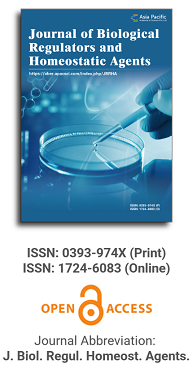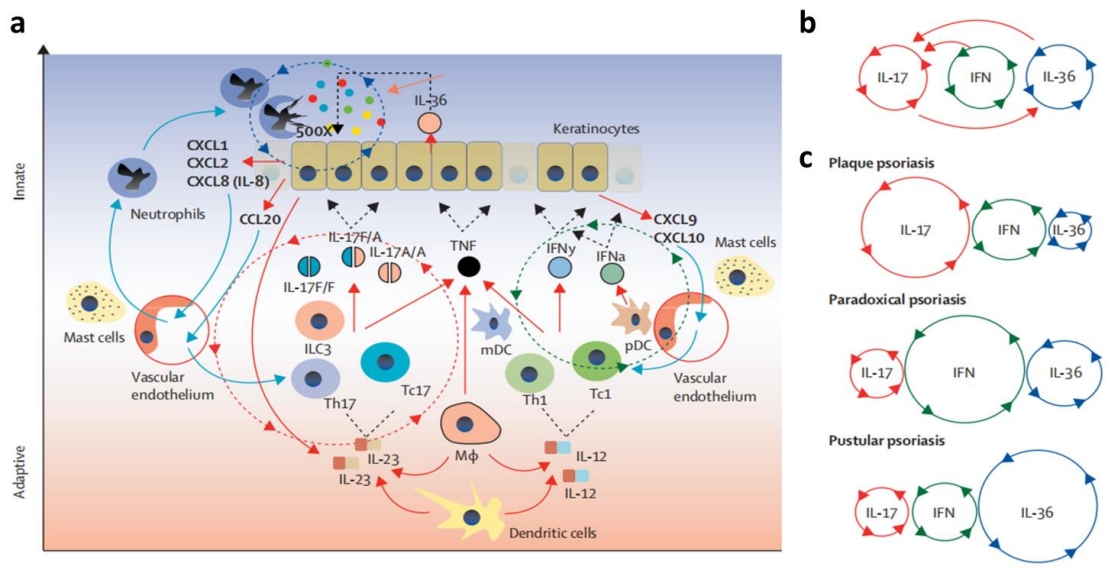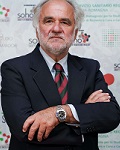
Publication Frequency
Quarterly since 2025
Journal Articles
Search
Search scope
Journal Center
Asia Pacific Academy of Science Pte. Ltd. (APACSCI) specializes in international journal publishing. APACSCI adopts the open access publishing model and provides an important communication bridge for academic groups whose interest fields include engineering, technology, medicine, computer, mathematics, agriculture and forestry, and environment.
Volume Arrangement
2025
Featured Articles

Psoriasis is a common, chronic, and inflammatory skin disease. Macrophages account for about 61.3% of the inflammatory cells infiltrating psoriatic lesions. Modulating macrophage polarization, inhibiting their infiltration, and targeting the secretion of inflammatory factors and associated inflammatory pathways by these cells can alleviate psoriasis symptoms and inflammation. Moreover, nanomaterials as novel drug carriers, offer unique advantages such as large surface area, easy modification, high biocompatibility, good biodegradability, enhanced systemic adsorption, etc. Nanomaterials have great potential for efficient drug delivery and release, as well as improving therapeutic efficacy while reducing adverse effects. By systematically addressing the role of macrophages in psoriasis pathogenesis and the potential of nanomaterials in treating psoriasis through modulating macrophages, this review enhances our understanding of the disease mechanism and holds promise for novel therapeutic breakthroughs and advancements in the future treatment of psoriasis.
HO-1 Prevents Oxidative Stress Damage, PromotesProliferation and Inhibits Apoptosis of OsteoblastsInduced by H2O2
Article ID: 3518
Vol 39, Issue 1, 2025
DOI: https://doi.org/10.23812/j.biol.regul.homeost.agents.20253901.4
Vol 39, Issue 1, 2025
Received: 24 August 2022; Accepted: 16 December 2022; Available online: 16 January 2025; Issue release: 31 January 2025
Download PDF
Abstract
Background: Hydrogen peroxide (H2O2) can induce oxidative injury, protein damage and DNA breaks in osteoblasts. The
purpose of this study was to investigate the effect of heme oxygenase-1 (HO-1) on the biological behavior and oxidative stress
damage of H2O2-treated osteoblasts.
Methods: The skull osteoblasts were isolated and divided into three groups: negative control group (without H2O2 or transfection
of HO-1 protein), positive control group (with H2O2 but without transfection of HO-1 protein) and experimental group (with
H2O2 and transfection of HO-1 protein). After 24 h of intervention, the apoptosis, cell proliferation, levels of reactive oxygen
species (ROS), malondialdehyde (MDA) and superoxide dismutase (SOD), protein levels of B-cell lymphoma-2 (Bcl-2), Caspase-3,
Tartrate resistant acid phosphatase (TRAP) and cytokinin (CTK), as well as protein and mRNA levels of bone gla-protein (BGP)
and Runt related transcription factor 2 (Runx2) were detected.
Results: Compared with the negative control group, the positive control group and the experimental group had lower levels of
SOD, lower protein and mRNA expressions of BGP and Runx2, higher cell proliferation inhibition rate, apoptosis rate, levels of
MDA and ROS levels, and protein levels of Bcl-2, Caspase-3, TRAP and CTK after intervention (all p < 0.05). The experimental
group showed the opposite results when comparing with the positive control group (all p < 0.05).
Conclusions: HO-1 can inhibit the oxidative stress damage of osteoblasts induced by H2O2, as well as promote the proliferation
and inhibit the apoptosis of osteoblasts.
Keywords
heme oxygenase-1; osteoblasts; apoptosis; proliferation; oxidative stress
References
Supporting Agencies
Copyright (c) 2025 Maimaiti Xiayimaierdan, Jinyong Huang,Chenchen Fan,Feiyu Cai,Zengru Xie

This site is licensed under a Creative Commons Attribution 4.0 International License (CC BY 4.0).
Editor-in-Chief

Medical Genetics, University of Torino Medical School, Italy
Co-Editor-in-Chief

Department of Biomedical, Surgical and Dental Sciences, University of Milan, Italy
Indexing & Archiving
News & Announcements
2025-02-01
In addition to the first issue that has already been published by the original publisher, there will be four more issues released this year, with scheduled publication dates in March, June, September, and December respectively.
2025-01-21
Starting from Volume 39 Issue 2 (2025), the ownership of Journal of Biological Regulators and Homeostatic Agents (ISSN: 0393-974X (P); 1724-6083 (O)) will be transferred from Biolife Sas to Asia Pacific Academy of Science Pte. Ltd. As of 21 January 2025, authors should make submissions to the new journal system and follow the author guidelines. Asia Pacific Academy of Science Pte. Ltd. will take over the publication of manuscripts being processed.

